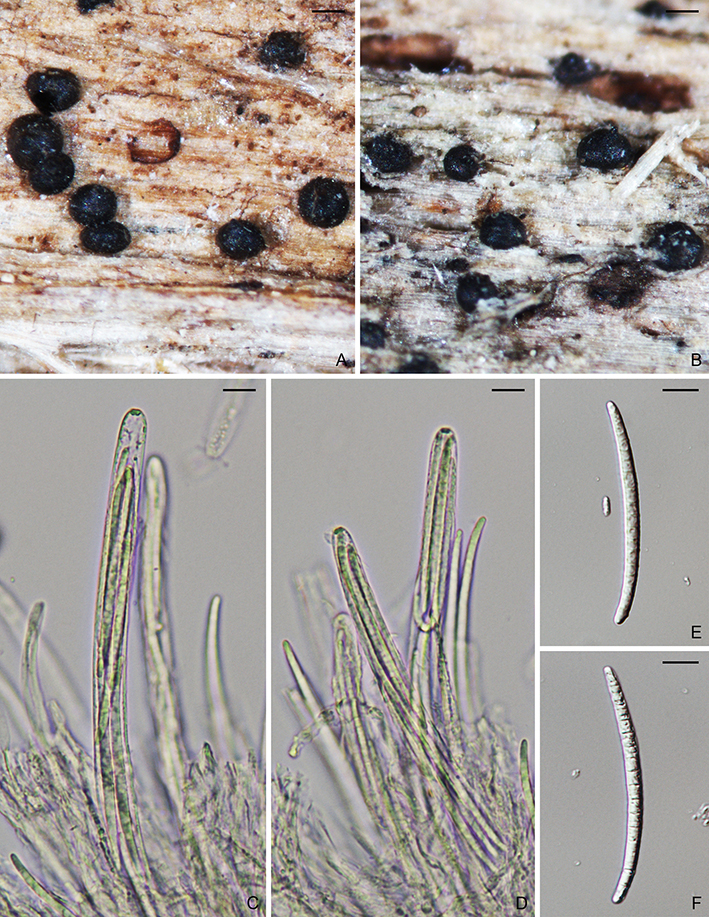
Figure. Ceratosphaeria lampadophora (ILLS159657). A–B. Ascomata. C–D. Asci. E–F. Ascospores. Scale bars: A–B = 200 µm; C–F = 10 µm.
Ceratosphaeria lampadophora (Berk. & Broome) Niessl, Verhandlungen des Naturforschenden Vereines in Brünn 14: 203 (1876).
MycoBank: MB250101.
≡ Sphaeria lampadophora Berk. & Broome, Annals and Magazine of Natural History 3: 372, t. 11: 28 (1859).
Ascomata perithecial, superficial, gregarious to solitary, dark brown to black, globose, ovoid to obpyriform, 350–850 µm diam, with a black, cylindrical neck. Paraphyses unbranched, septate, hyaline. Asci 8-spored, unitunicate, cylindrical, 135–175 × 8–10 µm, with a refractive ring. Ascospores 3–4-seriate in ascus, filiform to fusiform, 5–7-septate, not constricted at septum, hyaline, smooth, 60–75 × 3.5–4.5 µm. Asexual state unknown.
Typification: Broome, Oct. 1855; Broome, Apr. 1855; Pl. XI, fig. 28 (Annals and Magazine of Natural History 3).
Gene sequences: MN313785 (ITS), MN317269 (28S), MN313860 (ACT).
Specimens examined: USA, New Hampshire, Coos, White Mountain National Forest, Jefferson Notch Road at Jefferson Notch, on Betula, 1 Aug. 1983, J.L. Crane and J.D. Schoknecht, 58762 (ILLS159657).
Hosts/substrates: On wood.
Distribution: Australia, Canada (Ontario), Costa Rica (Alajuela, Cartago, Guanacaste, Limón, Puntarenas), Denmark (Sjælland), Ireland, Portugal (Braga), UK (Bath, Somersetshire). USA (New Hampshire, North Carolina, Tennessee, Wisconsin).
Copyright 2022 by The American Phytopathological Society. Reproduced, by permission, from Luo, J., and Zhang, N. 2022. The Rice Blast Fungus and Allied Species: A Monograph of the Fungal Order Magnaporthales (https://my.apsnet.org/APSStore/Product-Detail.aspx?WebsiteKey=2661527A-8D44-496C-A730-8CFEB6239BE7&iProductCode=46826). American Phytopathological Society, St. Paul, MN.